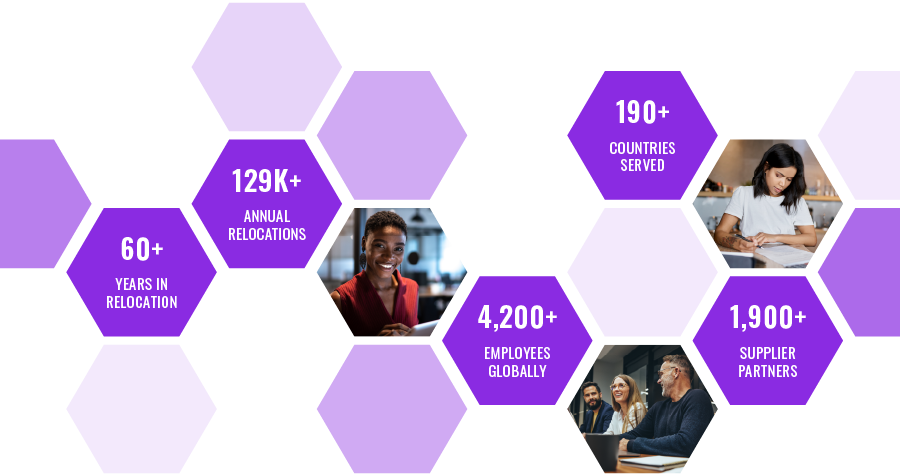Designing a Flexible Mobility Program (Part 1 of 4)
There are many reasons companies are striving to incorporate flexibility into their mobility programs. Removing barriers to relocation is among them. This is particularly relevant when considering the management of critical talent or succession planning, or in locations where qualified local resources aren’t available to fill an important role. But how much flexibility is enough? How much is too much? These are questions we’re often asked by organizational stakeholders and mobility leaders who are designing mobility programs, and the mobility professionals who are tasked with administering them.
Mobility Programs: Common Challenges
Mobility programs need to be flexible enough to accommodate organizational priorities regarding mobility investment, but the considerations shouldn’t stop there. The preferences and priorities of mobility customers and employees should also factor into the program design process. Employees have a more prominent voice in mobility today; in short, they want packages that are better suited to their needs and preferences, along with those of their accompanying spouses/partners and families.
As a result of these complex demands, there are some common mobility program challenges that companies face when supporting a globally mobile workforce, including:
- Balancing cost control with a strong employee experience
- Policy structure (limitations or ambiguity)
- Varying levels of support for different employees (resulting in confusion/perception of inequity)
- Varying levels of support dependent on geographic location and destination combinations (resulting in a company struggle to finetune their policy menus in ways that both regional and global stakeholders find substantive)
- Technology (quality or a lack of altogether)
- Length of time needed for decision making (due to a lack of policy clarity or a significant number of decision makers)
- Managing exceptions
- Compliance issues associated with relocation and extended business travel
Ultimately, striking the right balance between structure and flexibility is key to addressing each of the above challenges. For instance, providing the right technology to both mobility teams and relocating employees provides them with flexible access to real-time status information regarding each relocation. Clearly defined policies with room for customization provide a sense of customization among mobility professionals, equity among employees, and empowerment to both groups. These clearly defined parameters also support faster, more efficient decision making, fewer exceptions and managed expectations.
Structuring an Effective, Flexible Mobility Program
Mobility programs, policies, and package design each have a direct impact on the employee/family relocation experience. Therefore, while cost management is a legitimate concern when considering program design, any decisions regarding components and their administration should always be weighed against any potential negative impact on that experience. While a positive experience fosters strong employee perceptions of the company and its mobility brand, a negative experience could result in poor engagement and talent losses, impacting the company in ways that extend far past an individual assignment or relocation.
There are several factors to consider when structuring a flexible mobility program. To begin, we recommend segmenting your mobility population to determine the types of support that they will be entitled to, and at what levels. To do this, consider:
- Deployment Drivers: First, segment your mobility population according to the specific needs that are driving relocations. While some employees will be deployed to meet global expansion goals, others may be relocating as part of succession planning. Some may have self-selected an international experience. The varying reasons may call for providing different support services and varying levels of delivery.
- Employee Level: Next, consider the employee’s level or tier within the company. A C-suite employee will likely require more robust services than an entry-level employee.
- Relocation Experience: Determine the level of experience you wish to provide to the employee and who will have the discretion of implementing that experience (mobility manager, business leader or the employee).
- Geography: Finally, consider any employee motivators for the relocation, along with any needs, specific to geography, that might need to be addressed.
Next, we recommend examining each component of your mobility program to decide which items will be included or excluded. Flexibility can then be achieved by determining a range of support and delivery mechanisms that correspond to the segmentation described above. For example, if a company decides that it will provide temporary housing to its relocating employees, decision makers may consider the following:
- Support Level: Depending on where the employee falls in the segmentation process, temporary living accommodations may be provided on a “good, better, or best” basis. An entry-level employee might receive a “good” experience that includes 30 days of temporary accommodations. A manager who is relocating to meet an organizational goal might be entitled to a “better” experience of 45 days. A vice president who is being groomed for a promotion might be eligible for the “best” experience possible and receive 60 days.
- Delivery Level: Providing variations of support delivery is another way to introduce flexibility into mobility packages. Using the same temporary housing example, one employee might receive a “good” level of delivery support, in which s/he receives a lump sum of money to source and secure temporary housing arrangements independently. A “better” experience might include giving the employee a lump sum of money, but also providing access to a preferred network of vendors that provide a company/volume discount. A “best”-level experience might involve the employee being removed from the equation altogether. After choosing a property from a company-provided list, the business would handle all aspects of booking and invoicing.
Deciding who will have the discretion of including or excluding components is always another important decision to be made. Should it be the manager, business leaders, or the employee? Once you’ve decided, it’s important to develop clear, consistent guidelines around these components. Typically, we see mobility managers holding the decision-making power on international/cross-border moves. For domestic moves, employees often take the reins, though this is often correlated to the way program components are delivered; if an employee is receiving a lump sum, for example, s/he may have more of a voice on how that money will be used, choosing some components while rejecting others to stay within budget.
Core/Flex Mobility Programs
Many companies utilize a core/flex delivery model to incorporate flexibility into their mobility programs. By their nature, core/flex programs vary from company to company, as they’re designed with the unique needs of each in mind. Typically, however, flexible components are offered – within company-established parameters – around a core set of consistent offerings. Our next blog post in this four-part series will discuss what a core/flex plan is, the pros and cons of using one, and how to know if your company’s mobility plan is too flexible or not flexible enough. Striking an optimal balance is key, as it supports organizational goals, efficiency, and an employee experience that enhances employee relocation, productivity and your company’s mobility brand.
To learn more about incorporating flexibility into your mobility program, please contact us at concierge@sirva.com.
For more information please see SIRVA's Blog Disclaimer.





